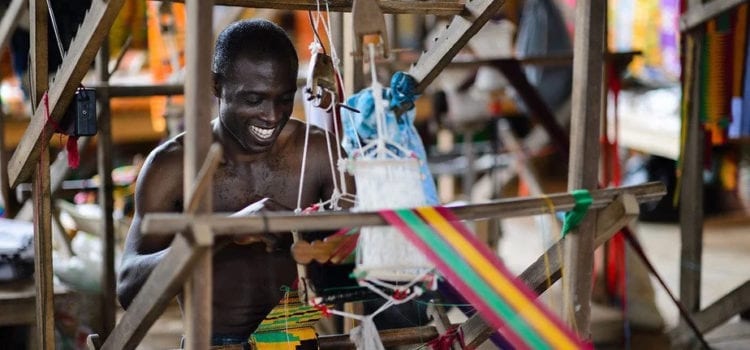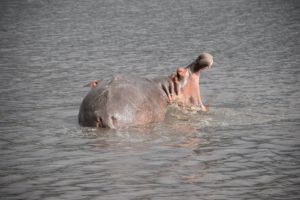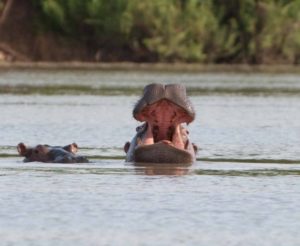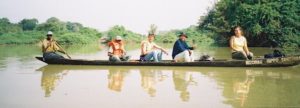Promoting Domestic Tourism: The Responsibility of Every Ghanaian
The fortunes of Ghana’s tourism has for a long time been hinged on the magnanimity of foreign tourists and visitors. While this phenomenon may not be bad considering that the country needs foreign cash, it is imperative we shift focus on scaling up numbers in the domestic tourism sector.
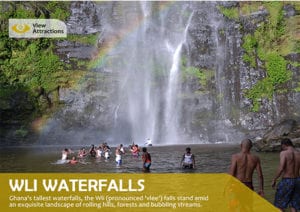
The need to grow this aspect of our tourism requires that citizens develop a keen interest in patronizing our tourists’ sites. It is a well-known fact that Ghana is blessed with some of the most incredible sites in the world. With many of these attractions in their natural state, lovers of nature and eco-tourists will find the country the best to be for some real tourism adventure.
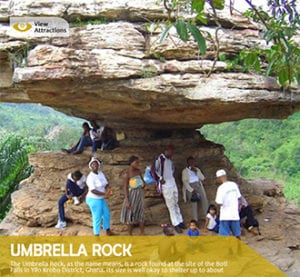
Ghana’s spectacular and scenic tourist attractions, hospitable people, and delicious food add to the grandiosity of an industry which is fast becoming one of the foremost pillars of the economy. But while statistics have shown over the years that foreign tourists and visitors have helped to boost the sector, there are equal indications that citizens can help to put tourism in Ghana on a much higher pedestal.
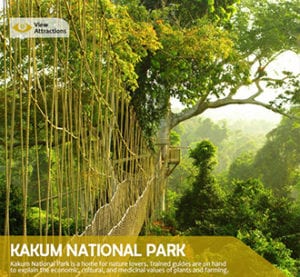
The need to shore up the domestic tourist numbers stems from the fact that evidence exists all over the world and particularly, in some African countries that the industry is rife with the prospect of transforming livelihoods through employment and wealth creation. There are strong indications that the potential tourism wields in transforming economies and empowering livelihoods is maximized through a vibrant domestic tourism sector.

Countries that have embarked on the promotion of local tourism are still reaping the benefits and have been able to transform whole communities into tourists’ sites while increasing local participation.
In South Africa for instance, domestic tourism has become an important source of revenue and employment, recording about 17.2 million domestic tourists last year ++with cruise and rural tourism as focus growth areas. World-class sites have been established to commemorate the country’s past and celebrate its new found unity, while the number and quality of community, village tours have grown dramatically.

While the Ghanaian scenario may be far from this narrative, evidence abounds to the possibility of having a more vibrant and effective domestic tourism sector which can significantly improve the living conditions of those engaged in it. Ghana has a vast and aesthetic collection of monuments in forts and castles, reverential sites and a lot more which have become a constant reminder of our historic role in the activities of the Transatlantic Slave Trade era. These sites can be harnessed to reflect the example South Africa presents.
It is significant to note that the promotion of domestic tourism is a shared responsibility that requires the concerted efforts of all stakeholders-policy makers, private sector, traditional authorities and local citizens.
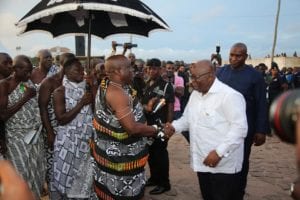
Individually, a change in perspective towards the patronage of tourists’ sites could go a long way to give the industry the needed facelift. While people may be inclined to visit some of these sites only during holidays, a change in perspective could make it a routine exercise which in turn could bring in more foreigners to the sites. So instead one of waiting to organize a group of people to Kakum Park on Farmers’ Day for example, they could go there on weekends instead. I have tried to explain my own observation of the kind of synergy that exists between Ghanaians and our tourism, yet I couldn’t have used a better example to illustrate that relationship than one of which I was part. In an era where new media and advanced technology is making it possible to practically do everything and anything, we should be able to use the tools of technology to drive tourism numbers domestically. Social media in particular, presents us with a fine opportunity for this to be done.

A unique element of tourism in Ghana is the fact that it is one of the few sectors of the economy which put direct money into the hands of those engaged in it, which implies that an increase in the number of visitations ultimately improves the financial situation of stakeholders.
As a country famously known for her peace and political stability, Ghana has proven to the world we can be trusted when it comes to safety of tourists and that should be leveraged on by local citizens by helping drum home this phenomenon to prospective foreign visitors and tourists.
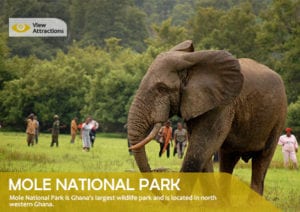
One way to stimulate interest in tourism will be to create tourism clubs and environmental protection societies in schools. More and more of the youth in Ghana must be involved in tourism; only then can they develop the strong desire to be a part of its success stories in the future. Additionally, annual leave from workers should be made compulsory to make sure that workers get time to visit tourist sites. Perhaps there should be a policy that workers who do not take their leave automatically forfeit their leave allowance.
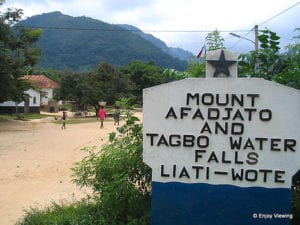
Ghanaians need to be made aware of the significance of domestic tourism and its impact on the Ghanaian economy. It is worthy of commendation that initiatives continue to spring up in the domestic tourism drive, notably; Ghana Tourism Authority’s, See Eat Wear Feel Ghana, Citi FM’s Heritage Caravan, Wango Wango, among others. While it is extremely commendable that such initiatives are helping to open up tourist sites to Ghanaians, there is still more that can be done to rouse the enthusiasm and the desire to patronize these sites. While we recognize the effort of government in trying to shore up interest among citizens to embark on domestic tourism trips, we urge it to create the enabling environment for local investments and businesses to thrive within the sector.
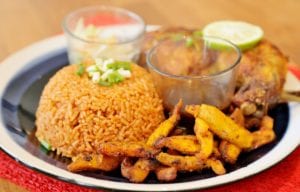
Tourism has an enormous potential to develop the country but this huge potential is easily overlooked. And until each Ghanaian is prepared to tap into this huge prospect, we will continue to rely on the magnanimity of foreigners to develop a sector which has the potential of creating wealth through massive employment for local citizens.
Writer:- Samuel Obeng Appah, Content Editor – VoyagesAfriq Media Limited
Twitter @ObengAppah
GTA launches Ada As Tourism Enclave
ADA AS A TOURISM ENCLAVE
The Ghana Tourism Authority in partnership with the Ada East District Assembly have together launched a project aimed at promoting Ada Foah area as a tourism enclave. This was done at a ceremony organized at Ada Foah yesterday.
Amongst the numerous tourism potentials of Ada include spots for marine watching, the Ada (Lake Volta) Estuary, the vibrant Asafotufiam Festival of the Chiefs and People of the Ada Traditional Area as well as beachfront and waterfront facilities for tourism.
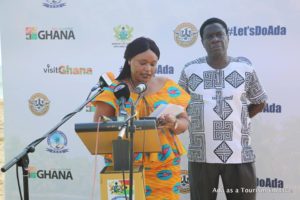

The estuary also offers the best conditions for water sports like sailing, canoeing, fishing, water skiing, wake boarding and jet skiing.
Another important water body and one of the most important salt mining areas in the country is the Songhor Lagoon which also serves as a base for birdwatchers.

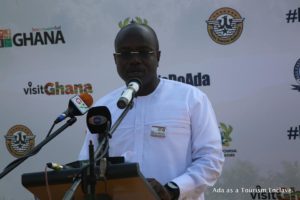
It is in this regard that the Ghana Tourism Authority, the Chiefs of Ada and the District Chief Executive had series of meetings to work on a blue print of inventory of all tourism sites, potential sites, policy imperatives for the Assembly and also the immense potential of tourism in the Ada East Area
.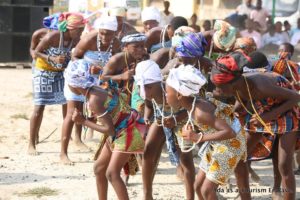

A working team co-chaired by the District Chief Executive, Sarah Pobee and CEO of GTA, Akwasi Agyeman including representatives of the chiefs, project partners and GTA Tema office was inaugurated by GTA Board Chairperson, Madam Ahwiring.
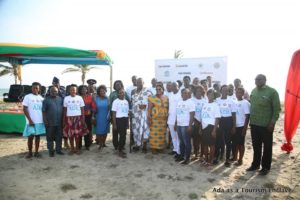
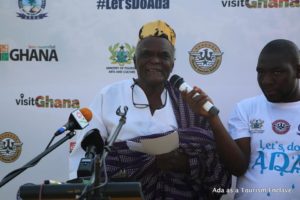
The plan is expected to open up the place for development with allocation of land by the chiefs.
Wechiau Adventures 4
This is the final episode of Kofi Akpabli’s Wechiau Adventures
I strolled past the main mosque and descended to the Wechiau market. By now the mid day sun was at its shinning best. Wechiau market occurs every sixth day. My tour began with a quick fix for lunch. I had fish caught fresh from the Volta fried in front of me. I sorted the treat with koosey fried in sizzling shea butter.
The interesting thing about Wechiau market is that for certain items there is the Lobi section and Wala section. With the koosey, for instance, there is the lineup of women preparing the Lobi one and directly facing them another line of women frying the Wala brand.
All the better for the customer, I thought. I simply helped myself to balls of the two varieties. Also, when I wanted pito to wash down my meal, I took care to respect the balance. A refreshing calabash of Wala pito went down first. Then I got up, wiped my lips and then went in for an equally satisfying calabash of Lobi beer. You may think this is a drinking spree but I disagree. I call it ‘‘cashing up the local economy’’.
Agbai, my tour guide had by now excused himself and handed me over to a connoisseur of the local brew. His excuse was reasonable. Being a Muslim, he would rather be excused from the drinking session. The poor, young man has suffered enough ‘‘haram’’ at my hands, having already watched me swallow akpeteshie.
It was thus on a full belly that I got mixed up in the crowd at Wechiau market, rubbing shoulders with traders, shoppers, goats and sheep. The main shopping area is made up of thatch roofed sheds supported by wooden poles. Items sold comprise charcoal, cook ware and second hand clothing. There is a big complex for stores. In front of this structure is the fufu base which is quite a sight.
Unlike the plantain and cassava affair that pertains in southern Ghana, fufu in these parts is strictly a yam business. The mortars for the process are giant ones with some standing as tall as chest level. It is real macho women who do the pounding. Five or six of them stand round the huge mortar each with pestle in hand. In rhythm, and with much energy, the pounders keep hitting till the fufu is done. There are about five of such stations in the market area. Can you imagine the fufu sound splash when all stations are pounding at the same time?
From the fufu base I strolled to the forex bureau section. If you are thinking dollars and CFA’s think again. In Wechiau society, cowries are as good as money. And the demand for them is very much alive. In a number of customary transactions, cowries are mandatory. Among friends and families, the exchange rate is a hundred cowries to ten thousand old Ghana cedis and vice versa. But the commercial rate is higher. Since the redenomination, the cowry system has also duly complied. One hundred cowries are now equal to One Ghana cedi, with the value being the same.
At the market, the day’s rate was 120 cowries for One Ghana cedi. And if it is 100 cowries that you want, you must pay One Ghana cedi twenty pesewas. Call this the bank rate. A bearded, middle aged man who knew not a word of English sat, legs outstretched with cowries spread on a mat. In my mind, I called him the Chancellor of the Exchequer. Guess what? The Chancellor was also selling cola nuts. When I appeared before him all he wanted to know was if I wanted cedis or cowries.
My last port of call was the chief’s palace. Having made an appointment, I arrived in the company of Agbai. One imposing structure in Wechiau town is the palace. Not surprisingly, there are hippo paintings on the outside wall. The palace is built in the form of the ancient Larabanga Mosque. But the inside is all modern.
The Wechiau-Naa, Imoru Nandon Gomah II was in the courtyard with three of his elders.
Naa is proud that the transformation of Wechiau is happening under his traditional leadership. He believes his forefathers would also be happy. He said that in the past, their people showed great strength by hunting down and eating the hippo. In those days anyone who killed a hippo was a hero and presented the hind legs to the chief’s palace. According to the paramount chief, today, such an act would be a taboo. ‘‘My forebears might have been braver, but because I protect the hippopotamus, I have seen things that they have not seen’’, he added.
Having finally brought my trip to an end, my next action was to jump on the next available bus to Wa, rest my exhausted body for the night and then connect to Accra the next dawn. As for Agbai and his crew, I don’t think I can thank them enough.
In many respects, my adventure to Wechiau has been fulfilling; the river safari, the encounter with the hippos, the interactions and all the new things learnt. But more than any of these, it was one simple phrase that kept coming back to me. It meant much more to me than I can ever explain. This was a statement made by Wechiau-Naa during our chat: ‘‘every stranger’s visit makes us feel important’’
I left Wechiau with those words ringing in my head.
Author: Kofi Akpabli (A travel writer)
Wechiau Adventures 3
The third episode of Kofi Akpabli’s Wechiau Adventure
Having seen all I wanted to see I signalled to my party. Before we set off, our boatman decided to scoop out water from the canoe. Shortly after we set sail, we met another boat with a white couple. They wove gingerly to us. Getting to Wechiau is a rugged adventure still an encouraging number of visitors manage to come for the experience.
River Safari
Our river safari ended at Talawona where it had started. The name of this place means ‘‘I do not ever want to hear again.’’ It expresses the aspirations of the Lobis who settled here after escaping from constant battles in Burkina Faso. Back on land, we joined my rented car for the 18 km trip to Wechiau.
About ten minutes after we hit the road, we stopped at the Talawona Tourist Lodge. Built in an authentic Lobi style, the accommodation is basic but comfortable. Each room has three single beds covered with a mattress and mosquito net. There is a kitchen, a dining hall and cooks on the ready.
Where to stay
For lodgers who like the outdoor, there is a brilliant idea of a platform mounted up against a kapok tree. Some tourists prefer sleeping there for breeze and closeness to nature. Given the chance, I would love to observe sunset from there.
When we resumed our return trip, we made a number of stops at Lobi compounds. What fascinates me most about northern traditional buildings is the barn. It is basic to the architecture. Much skill goes into how different types of crop harvests are stored and retrieved. I find nothing more secured than living in your own house with your kinsmen with all your food supply for the season right under your watch. Kind of reminds you of Noah’s Ark.
We also stopped by a compound where akpeteshi was being distilled. One would think that this local gin could only be produced in palm or sugar cane growing areas. Well, don’t you wonder anymore. Here, they use sugar as the base for the preparation. We got there at a time the hot stuff was piping out from a barrel into a sieved jar. The smallish distiller and his party were excited the way schoolboys are when their pranks lead them to a positive discovery. They were eager that I have a sip.
Now, there is this thing about village folks. Here is a business unit that has invested so much in a venture. Just as all is set to break even, up comes a gallivanting stranger from God-knows-where and everyone is excited about me participating in their enterprise. That doesn’t happen in A-c-c-r-a.
Ghanaian warmth
This genuine warmth towards the next fellow is something city people usually lack. It has to do with an innocent desire to share. Well, bottom-line? Akpeteshi was being offered. So who am I to spoil the goodwill of such kind, innocent souls? Let’s just say there was a swallow. And I got an ovation for that.
Back in Wechiau town, I walked to the visitor centre of Wechiau Community Hippo Sanctuary. It is one large room which serves as an office, showroom and meeting place. Appropriately, the white, huge skull of a hippopotamus is positioned to welcome you.
The information and finance officer, Abdulai Issahaq received me. It was a busy day for him because it was Wechiau market day. Those visiting included tourists, rangers, and project volunteers from the 17 communities that form the Sanctuary. The centre employs five tour guides, five administrative staff, 10 rangers and 15 boatmen.
I saw souvenirs of tiny hippopotamus made in clay. The walls of the visitor centre are pasted with items that tell the story of the place. Through the efforts of Nature Conservation and Research Centre, an NGO, the Wechiau Hippo Sanctuary project has been linked to the Calgary Zoo of Canada. The Dutch Development Organisation, SNV is a partner to the project.
Quite naturally, awards and citations decorate the walls. Among them, ‘‘Community Initiative in Tourism Development’’ won at both Regional and National levels. There is also the SKAL International Award for 2006. I saw the framed photo of the Paramount Chief of Wechiau in a pose during an invitational trip to Canada.
From the centre, I went through town to have a feel. The area you would call the centre of Wechiau town has an unfenced mausoleum. The oldest tomb there is for a chief called Naa Daguo who was buried as far back as 1910.
For entertainment, there is a xylophone music session that can be arranged. Night life in Wechiau is supported by three well-dispersed drinking bars. There is a video centre that runs on a very smoky generator. The night before I had seen children barely in their teens watching the film, ‘‘Lost in the Jungle.’’
WECHIAU ADVENTURE 2
This the second episode of KOFI AKPABLI’s Wechiau Adventure
Thanks to the community owned and self-managed Wechiau Hippo Sanctuary Project, social amenities have been brought to people’s doorstep. Wechiau town and the sixteen communities involved in the project have solar power that lights up their lives. Also, they need not drink from the Black Volta and risk guinea worm and bilharzia anymore. There are boreholes that pump up safe drinking water.
When they do get ill, a 24 hour health centre at Wechiau is there to restore health. The number of schools in the project areas has also increased. The influx of visitors sparks up demand for local goods and services.
We rowed across floats hooked to fishing net. The fish trap is set in the morning and then harvested in the evening. Life in the Black Volta includes cat fish, mud fish, tilapia and crocodiles. Fishing is the only activity allowed within the sanctuary. hunting and farming along the river are strictly prohibited.
Hippos and birds?
Once in a while, we heard a piece of bird song; a chirp here, a coo there and a warble across. When these sounds were stringed together it was a choir act. If we had come at dawn, we would have been entertained to a symphony. The Wechiau Sanctuary is also a bird lover’s paradise. As many as 200 bird types have been documented. Any expert in ornithology would tell you that is a world class collection.
The names are as interesting as the species vary; Red-bellied Paradise Flycatcher, Yellow-throated leaf love and Western-banded Snake Eagle. Others are Four banded Sandgrouse, Senegal thick-knee, Greater Blue-eared Starling and Exclamatory Paradise Whydah. My tour guide took pains to point out the species. But with hippos on my mind I really couldn’t care much for birds.
One big one flew above us, went further up and swooped down, angling for a fish. In a flash, it was up in the air again. ‘‘Is that a kingfisher?’’ I asked, more in a bid to show that that I am not green. The predator’s manoeuvre was just like you see in wildlife films on TV. Only when I looked up hard at the bird, I could not see a fish in its claws. A miss, maybe.
By now we had done about half an hour. In my eagerness, I really thought we had gone past one hour. Not too far ahead I could see the famous Tukpon Island. Also known as Tankara, it is the biggest of all the islands within the river sanctuary. The spot is an important landmark as it served as the hide out for natives escaping from raiders during the Trans-Atlantic Slave Trade.
Game at last
A dark, round-like shape jutting out of the river appeared within sight. I thought to myself, ‘‘game at last’’ and raised the alarm. It turned out to be a rock. Agbai advised that I should calm down. He assured that it was a good day to find hippos.
It is not everyday that one spots hippos at Wechiau. The best time is during the dry season spanning October to May. During this period the water level comes down and the animals cannot easily hide.
My guide drew my attention to a series of large muddy holes that led from the water vanishing in the undergrowth. He said they were the footprints of a hippo. Hippos are amphibious, meaning they live the double life of water and land creatures. They choose to leave the water at night to hunt for food on land.
The silence on the Volta was suddenly broken by a noise like the fast rush of water. Before I could ask, it came again; this time sounding like the puff of a heavyweight punch. I was not brave enough to turn and face Agbai for feedback. But I hear his ‘‘yes, yes’’, over my shoulder. I open my eyes wide. I see nothing. Then the silence returns. What was that noise?
‘‘A hippo is breathing’’, said my tour guide.
As we rowed nearer, something emerged. And quickly submerged. Agbai instructed that I keep my eyes on the spot. I did, yet all I could see was that the water in the area seemed to boil and boil and then… up rose the beast!
First thing that came to my mind was ‘‘reared its ugly head.’’ The phrase came home to me as a combination of power and movement and sound broke the calmness of the morning. At that material moment, I realised that I have finally come face to face with the object of my mission.
My record check showed that the spectacle was taking place exactly after 56 suspenseful minutes of boating. My reality check confirmed that after a few seconds, the animal was still in front of me. It was big, dark and leathery. But the real colour was something between brown and dark. A close look would show other shades.
What was more definite, however, was the monster’s ugliness. The hippo is ugly, in a way that commands you to watch. Like all big animals, it carried an air of majesty though awkwardly. Our hippo shook itself and then lowered its body. The head remained above water.
Broad snout with large mouth…
Quickly, I jotted down the vital statistics: broad snout, large mouth, short barrel-like body. Eyes, ears and nostrils are located on the top part of the head. And they all protrude. This facial set up allows the hippo to rest its whole body in the water, while still able to see, hear and breathe.
Hippos come up for air every 6 or 7 minutes, but when under pressure they can hold their breath under water up to about 30 minutes. The act of surfacing and breathing is automatic to the hippo. Even when in a sleeping state underwater, this animal will rise and breathe without waking.
I did not know when that was done but I realised that our canoe had virtually stopped and we were just floating around one spot. I noticed that we had ‘‘parked’’ by a rock to see action. Abdulai had got up and jumped to the top of the rock.
I was instructed to turn and face the beast. I turned slowly from my bench, checking to be sure that the straps of my life jacket were in place. I sat with a leg on each side of my canoe seat. Now I could see better action. Kassem, the camera man also positioned himself to take action shots. Between us and the hippo I could estimate a respectable distance of about some 50 metres. I hoped the hippo also sees 50 metres as respectful enough.
In my new position, I had full view of the animal. The Lobis call hippopotamus ‘‘kaka.’’ Make it ‘‘kakai’’ and you have the southern Ghana word for beast. A little towards our left, two more showed up. Agbai explained that it was a mother and child situation. Like humans, hippos normally give birth to one baby at a time. Their interval between births is two years. They are also social animals. They believe three is a crowd and thus like moving in pairs and sometimes alone. When they can’t help it, they form part of a larger group.
Another bloat of two hippos emerged. In all, there are twenty odd members in the sanctuary and that is quite a crowd. We watch the newcomers play. Though clumsy in appearance they seem graceful in the water. On land, hippos can easily outrun humans, in spite of their stocky shape and short legs. They have been clocked at 48 km/h while running short distances. If you are fussy with records, that is faster than the speed of an Olympic sprinter.
Endangered Species
Although the hippo is not yet endangered, its habitat has been greatly reduced over the last 200 years. All over the world hippos are prized for their teeth which are superior to the elephant’s ivory. Their hide is also considered valuable. I ask Agbai about poaching. No hippo has been killed at Wechiau in recent memory. That speaks volumes for the cooperation of the communities.
Another reason may be because the hippo is among the most dangerous and aggressive of all animals. It is considered to be Africa’s most dangerous. When you put a bullet through it, for instance, you must be prepared to chase miles after it before you can get its body, that is if it falls at all. As a hippo’s anger grows it keeps ‘‘yawning’’ and then, shows its big teeth. A hippo’s jaws are capable of biting a 10-foot crocodile in two. Any question?
But hippos have their soft side too. Like humans, they are quite shy especially when in small groups. They can also be tolerant with birds pecking food from their backs. Even turtles and baby crocodiles are free to enjoy the sunshine on them.
The hippo’s feeding habit also is another paradox. Here is a creature which can go for three weeks without feeding. But when it wants to eat, the hippo grazes for five hours non stop. In one night it can consume 68 kilograms of grass. Now, that is equivalent to the weight of a fully grown man.
Some people think the hippo sweats blood. This is because of the pinkish, oily liquid that sometimes oozes from their skin. But this is not blood. In fact, the hippopotamus does not sweat. They do have a thin skin that easily dries out. And when out of the water for a while this liquid prevents the skin from drying out and acts as a sunscreen.
A hippo’s lifespan is usually 40 to 50 years. In captivity they live longer than that. The oldest hippo ever was called Tanga. She lived in Munich, Germany, and died in 1995 at the ripe age of 61.
– Kofi Akpabli is a travel writer
THE WECHIAU ADVENTURES
This the first episode of KOFI AKPABLI’s (travel writer) Wechiau Adventure
Mission
The vehicle to accomplish the mission was not much; a narrow, 15 foot canoe made of mahogany. After travelling 899 km from Accra, and after countless daydreams and night ones, my moment of truth came when we hit the river. It rolled out vast and as far as the eyes could see.
I was first to face the Black Volta. Behind me, a file of four. These were men I had met for the first time barely an hour ago. But all were playing no small role in the expedition. Sitting directly after me was Agbai Issahaq, my tour guide who was followed by Kassem, the local photographer. Next sat Abdulai, the driver who brought us from Wechiau to the water front at the cost of 20.00 Ghana cedis. At my opposite end was the boatman with the paddle. He is a mere 19 years. Hassan is the lad in whose hands my life rested. I made a mental note to tip him extra after the safari… if I survived.
We cruised at a leisure pace watching banks of savannah forest pass us by. Having quite settled on my piece of seat, I dipped my entire palm in the water and brought it out. The Black Volta felt milky, tasted clayey and smelt odourless. This is the water body that is home to the most famous hippopotamus family in Ghana. It is also international territory. The bank on our left is Ghana and on our right, the Republic of Burkina Faso.
If we continued at our pace for seven days and seven nights, we would appear at Bamboi in the Bole District of the Norther Region. The stretch we were riding is part of the 40 km long Wechiau Community Hippopotamus Sanctuary. Our mission? To spot hippos.
Hippos?
The hippopotamus (Hippopotamus amphibius) is the largest mammal on land, after the elephant. It can weigh up to 4000 kilogrammes – the weight of three saloon cars mashed together. An interesting fact about the hippo is that it is one animal whose species status baffled scientists for a long time. Centuries ago when the Greeks first encountered the creature they named it based on two concepts, hippos meaning ‘‘horse’’ and potamos meaning ‘‘river’’.
But new knowledge later showed how wrong the Greeks were. The hippo does not belong to the horse family. At a point, some naturalists considered it a species of the cow. In fact, the female hippopotamus is still called a cow, its male a bull and the baby a calf. But it was discovered that the hippo is not related to the cow either.
Because of its dental formula, a section of the science community used to believe that the hippo is a type of pig. This view was further supported by the fact that it has a ballooned body supported by short, stocky legs. Again, that also proved to be wrong. As a matter of fact, the closest cousin of the hippopotamus turns out to be the whale.
As we sailed on the trail of the hippo, I could not help but feel an eerie silence. It was the kind of heavy hush that you feel in large, lonely places. It was so quiet, each time a big fish got excited we heard the splash. Meanwhile, the sun, after much hold up by rain clouds, was now showing its presence by shimmering on the water top…
Where is it?
The Wechiau Hippopotamus Sanctuary is located in Wa West District of the Upper West Region. Wechiau, (pronounced ‘‘Wey-chao’’) has since 1999 been one bright community based tourism project. According to local sources, the place got its name from the phrase ‘‘to cut’’ in Wechegii dialect. Oral tradition says that prior to settling in the area, the founders had to cut a mighty amount of forest. Other versions allude the name to a native who was trying his hands at English and instead of saying ‘‘we cut’’ ended up saying ‘‘we chao’’.
Whatever the source of its name, Wechiau has cut a good image for itself as a tourist destination. A glance at the visitors’ book at the reception shows a rich mix of visitors from all parts of the world. Close to Burkina Faso as well as La Cote D’Ivoire, the attraction is a must see for the adventurer who also wants to experience nature and culture.
Side Attraction?
While hippos happen to be the star attraction, there is more to the area. A 300 year old mosque is worth seeing. It was built by Liman-Yiree who came from Kpong in Cote D’Ivoire. There is also a botany walk for those interested in plant life. In addition, the sanctuary is home to monkeys, bats and three species of antelopes.
Wechiau society itself is a fine showcase of how a variety of distinct cultures can exist in harmony. Together, the Wechegiis (Walas), Lobis and Hausas have blended their ways of life, same way as they have preserved their identities.
The Lobis, for instance, enjoy a high standing in international cultural circles. Also found in Burkina Faso and La Cote D’Ivoire, the Lobis are a people who avoided European contact as much as they could. The French, for example, feared them for their poisoned arrow resistance to colonialisation. Thus, very few are the Lobis, who are either Christian or even Muslim.
There is extensive documentation of Lobi sculpture, customs and architecture in world literature. Also known as the Birifor, they are noted for piercing the lips of their women. But that was then. Today, of course, a young Lobi lady would rather have her lips greased with designer lip shine.
As we continued our boat ride, I heard a ‘‘yooo!’’ that rung through the forest. I noticed two fellows standing by the river on the Ghana side. Agbai pointed at a small canoe tied to a tree at the Burkina side. ‘‘They are calling for the boat.’’
The boatman is on the French side, stationed not far from the boat. He would hear the call, row across to the other side and ferry the passengers. It takes about ten minutes and costs 2 Ghana cedis. The equivalent in franc CFA is accepted.
‘‘What if you cannot afford?’’
‘‘You swim’’, replied Agbai.
He was not being sarcastic. Poverty in these parts is a very familiar reality. In the absence of any local industry, the youth here are limited to what their ancestors have always done, catch fish and till the land. The more ambitious among them engage in the ‘‘energy sector’’, that is, burning fuel wood for charcoal.
BIG CAT AT MOLE PARK
As a travel writer one of the questions I get asked is: ‘’Are there lions in Mole Park?’’ This usually reminds me of the Ghanaian phrase concerning what could be hiding inside Dodowa Forest. Of course, curious tourists would always wonder, especially, as Mole doesn’t announce itself as a big cat viewing destination.
This year’s World Wildlife Day has just been marked and the theme was on big Cats as Predators being under attack. Ironic, won’t you say? But it is the reality. Strong and majestic as they are, these predators are facing varied threats which are mostly caused by human activities. Africa, the second largest continent in the world, is home to several species of these wild animals. They are generally, admired for their grace, power and speed but their survival is at the mercy of habitat loss, climate change, poaching and illicit trafficking as well as human-wildlife conflicts.
The 2018 edition of World Wildlife Day celebration was therefore dedicated to raising worldwide awareness on Big Cats and the threats to their existence. Lions, leopards and cheetahs face impending extinction if nothing is done to protect their habitats and save them from current threats. This is especially the case in Africa where surveillance is not as tight.
The term “big cat” is typically used to refer to any of the five living members of the Panthera, namely tiger, lion, jaguar, leopard and snow leopard. Except the snow leopard, these species are able to roar. A more liberal and expansive definition of the term includes species outside of Panthera including the cougar, clouded leopard, Sunda clouded leopard and cheetah, although these added species also do not roar.
Despite enormous differences in size, various cat species are quite similar in both structure and behaviour, with the exception of the cheetah, which significantly stands out from the other big and small cats. All cats are carnivores and efficient apex predators. Their range includes the Americas, Africa, and Asia. It is estimated that the ancestors of most big cats split away from the Felinae about 6.37 million years ago. Oh yes, that little cat at home actually shares direct ancestry with the lion.
The ability to roar comes from an elongated and specially adapted larynx and apparatus. When air passes through the larynx on the way from the lungs, the cartilage walls of the larynx vibrate, producing sound. The lion’s larynx is longest, giving it the most robust roar.
The principal threats to big cats vary by geographic location, but primarily are habitat destruction and poaching. In Africa many big cats are hunted by pastoralists or government ‘problem animal control’ officers. Certain protected areas exist that shelter large and exceptionally visible populations of African leopards, lions and cheetahs, such as Botswana’s Chobe, Kenya’s Masai Mara, and Tanzania’s Serengeti. Rather, it is outside these conservation areas where hunting poses the dominant threat to large carnivores.
Lions for instance which once roamed the continent have seen a sharp decline in their population in the past decades. In North Africa, for example, they can no longer be found. As for West Africa it is currently estimated that less than 400 lions remain.
This is surprising because not too many years ago, lions and leopards were common across the region. It was very common in the past to find them at the Mole National Park and in some parts of the savannah regions of Ghana. Beyond that folktales abound with the presence of big cats.
Now the situation has become different with the species becoming rare. Recently studies on the historical and current status of lions in Ghana indicate that, a couple of them were sighted by poachers. Others have also confirmed their roars heard from a distance.
By: Kofi Akpabli – Travel Writer
Read more.. Click Visit Mole
AWARD WINNERS AT 5TH AFRIMA
The 5th All Africa Music Awards, AFRIMA held in Accra, Ghana on November, 24, 2018 had in attendance music stars, dignitaries, and music lovers across the continent, the annual music event seeks to celebrate and reward African talents who have done exceedingly well in the year.
With a total of 36 categories, the 5th AFRIMA winners are culled from the Regional and Continental categories. In addition, special recognition awards fully decided by thenInternational Committee of AFRIMA is awarded to individuals who have impacted positively to the world using their craft. The 5th AFRIMA Legendary awards was given to the internationally recognized South African singer, Yvonne Chaka Chaka. The music legend, who is “dubbed Princess of Africa” has a career span of over 30 years with several hit albums, has performed for notable personalities within and outside the country.
Executive Governor of Lagos State, Akinwunmi Ambode was awarded a special recognition for his contributions towards the growth and development of the Arts and Tourism sector of Lagos state, most importantly the role Lagos state played as official host of AFRIMA in its last 4 years from 2014 – 2017.
In what turned out to be an emotional moment for the audience, a special recognition awards was given to one of Ghana’s music veteran, Teddy Osei, the leader of the famous Osadebe group, an Atropop band created in 1969. The veteran who was helped to the stage in a wheelchair had been suffering from a mild stroke, but was overwhelmed by
such great honour.
See winners below;
REGIONAL CATEGORY
Best Female Artiste in Central Africa -Daphne / Cameroon / Jusqu'à La Gare
Best Male Artiste in Central Africa -Fally Ipupa / DRC / Mannequin Ft Keback & Naz
Best Female Artiste in Eastern Africa -Betty G / Ethiopia / Mengedegna
Best Male Artiste in Eastern Africa -Bebe Cool / Uganda / Freedom
Best Female Artiste in Northern Africa -Lyna Mahyem ft Medi Meyz /Algeria / Bye Bye
Best Male Artiste in Northern Africa -Hamza El Fadly / Morocco / Ya Mraya
Best Female Artiste in Southern Africa -Shekhinah / South Africa / Please Mr
Best Male Artiste in Southern Africa -Nasty C / South Africa / Jungle
Best Female Artiste in Western Africa -Tiwa Savage / Nigeria / Ma Lo Ft. Wizkid & Spellz
Best Male Artiste in Western Africa -Davido / Nigeria / Fia
5TH AFRIMA WINNERS CONTINENTAL CATEGORY
ALBUM OF THE YEAR -Betty G / Ethiopia / Wegegta
ARTISTE OF THE YEAR -Davido / Nigeria / FIA
BEST AFRICAN VIDEO -Sesan / Gringo (Shatta Wale) / Nigeria
BEST AFRICAN ACT IN DIASPORA -Hazel Mak / Malawi / Jaiva Ft. Roberto & Tay Grin
BEST AFRICAN COLLABORATION -GuiltyBeatz, Mr. Eazi, Patapaa & Pappy Kojo / Ghana-Nigeria / Akwaaba
BEST ARTISTE, DUO OR GROUP IN AFRICAN CONTEMPORARY -Kidi / Ghana / Odo Remix Ft. Mayorkun & Davido
BEST ARTISTE, DUO OR GROUP IN AFRICAN DANCE OR COREOGRAPHY -Mr P. / Nigeria / Ebeano
BEST AFRICAN DJ -Afrotronix / Chad / OyO
BEST ARTISTE, DUO OR GROUP IN AFRICAN ELECTRO -Master KG / South Africa / Skeleton Move Ft. Zanda Zakuza
BEST AFRICAN DUO, GROUP OR BAND – Toofan / Togo / Money
BEST ARTISTE, DUO OR GROUP IN AFRICAN HIP HOP -M.ANIFEST FT KING PROMISE / Ghana / ME NE WOA
BEST ARTISTE, DUO OR GROUP IN AFRICAN JAZZ -Sibusiso Mashiloane / South Africa / Niza
BEST AFRICAN RAPPER OR LYRICIST -Falz / Nigeria / La Fête
BEST ARTISTE, DUO OR GROUP IN AFRICAN POP -2Baba / Nigeria / Amaka Ft. Peruzzi
BEST ARTISTE, DUO OR GROUP IN AFRICAN RAGGA, REGGAE & DANCEHALL -Stonebwoy / Ghana / Hero
BEST ARTISTE, DUO OR GROUP IN AFRICAN R 'N' B & SOUL -Praiz / Nigeria / Champagne and Flowers
BEST ARTISTE, DUO OR GROUP IN AFRICAN ROCK – Maryam Saleh, Maurice Louca, Tamer Abu Ghazaleh / Egypt / Ekaa Maksour
BEST ARTISTE, DUO OR GROUP IN AFRICAN TRADITIONAL -Irene Namatovu / Uganda / Nsambila Nyuma Nga Janzi
BEST FEMALE ARTISTE IN AFRICAN INSPIRATIONAL MUSIC -Sandra Nankoma / Uganda / Kaddugala
BEST MALE ARTISTE IN AFRICAN INSPIRATIONAL MUSIC -Sarkodie / Ghana / Glory Ft. Yung
MOST PROMISING ARTISTE IN AFRICA -Kuami Eugene / Ghana / Confusion
PRODUCER OF THE YEAR -Fresh VDM / Togo / Fia
REVELATION OF THE AFRICAN CONTINENT -Betty G / Ethiopia / Ere Manew
SONG OF THE YEAR -GuiltyBeatz, Mr. Eazi, Patapaa & Pappy Kojo / Akwaaba / Ghana
SONG WRITER OF THE YEAR -Shekhinah Donell, Amon Taulo Chibiya II / South Africa / Different Ft. Mariechan
AFRICAN FANS’ FAVOURITE -Nedy Music / Tanzania / One and Only Ft. Ruby
MONKEY BUSINESS IN TAFI-ATOME
How it begun
About 200 years ago when the people Tafi Atome migrated to their current area they carried with them their deity which revolved around the tortoise and the monkey. The monkeys are considered gods and are revered by the local community and protected by tradition.
In the 1990’s the USAID, Peace Corps, SNV and the then Ghana Tourist Board got involved with ecotourism. This spread across 14 tourism attractions which included Tafi Atome. Since that time Tafi Atome Monkey Sanctuary has become one of the top destinations in terms of revenue and community management.
The experience
Imagine you hold a banana in your hand and before you say Jack a monkey appears from nowhere and snatches it away! That is not all. The little naughty guy climbs up a tree, carefully unwraps the loot, makes eyes at you and teasingly eats your banana. This is the game that awaits you when you visit the Tafi Atome Monkey Sanctuary. Tafi Atome is located in the Volta region not far from Hohoe. In 1993 the land around the village of Tafi Atome was set aside as a sanctuary for the Mona Monkey population that lived in the forest that are seen as sacred.
The Community-based attraction
Today, community-based ecotourism is helping to return the village to its roots with a unique business model that blends environmental conservation with community development and cross-cultural exchange. As a result of the efforts to protect their forest and monkeys, tourist interest has also increased. The playful monkeys are wild but often come down very close to visitors. Indeed, one of the wonderful things of this sanctuary is how close up you get to the monkeys. In addition the forest has many species of birds and butterflies, which have been preserved.
A plus for Tafi is that it is located in the mid-Volta tourism circuit which includes Afadjato, Liati-Wote, Amedzofe and Wli Waterfall which is less than an hour’s drive away.
Finding your way
The monkey sanctuary lies about 2 km from the main road but it is easy to reach even if you are traveling by public transport because there are taxis and motorbikes waiting at the junction to give a ride to tourists. Having arrived in town the night before, I woke up to a village atmosphere of bird songs and goodwill greetings from everyone. Immediately, I set off towards my monkey business. At the visitor centre my guide promptly joins me. We were ready to start the tour.
But first I was sent to buy bananas from a local seller. I could see local food being prepared and other folks starting their daily activities. Tafi Atome is a small idyllic village. One can arrange for an evening of entertainment including drumming, dancing or story telling around a bonfire.
The impact
Revenue from tourism has brought electricity to this village. The profits from tourists have been used to build a junior high school, guest house, clinic, street lights and toilet facilities for the community and schools. The villagers I talked to are happy with the visitors to the sanctuary, because it creates jobs for them.
Banana weapon
This village is definitely worth a visit, beyond the monkeys there is very little hassle in the village and you can take photographs and walk around at ease. Armed with bananas my tour guide and I entered the forest with the hope to see the monkeys. One way these monkeys differ from the ones at Boabeng Fiema is by the white ring of colouring around their waists. The species here are Monas and Patas. A special feature is that there is a monkey cemetery exclusively for the animals when they die.
The trails & war
It appeared as if we were walking down a path to the middle of nowhere. The sanctuary has great trails to walk along. We walk through the beautifully green rainforest. Suddenly my guide started making prolonged, kissing noises. Then there they were! Emerging from the forest and sitting on the trees above us where dozens of monkeys. You have heard that monkeys play by sizes. It is true. And here, they also move in family groups. It was ‘Commando’ the troop leader who made the first advance. Before I knew what to do with the banana this senior monkey took it away from me and vanished.
Your winning strategy
I now understood why the tour guide was making me hold half a banana to feed the monkeys. The trick here is not to hold the fruits full length. Be sure to hold on tight for them to eat it, otherwise they’ll pull hard and run up the tree to hoard it to themselves. Another fun is that these guys were not afraid to steal banana bits from other monkeys as well!
By: KOFI AKPABLI (Travel Writer)
kofiakpabli@gmail.com
GTA Trains Frontline Staff In Customer Service and Marketing
The Ghana Tourism Authority has organised a 3-day training programme for its Frontline staff to sharpen their skills.
The training programme was held at the Accra Tourist Information Centre (ATIC) from 20th – 22nd November, 2018.
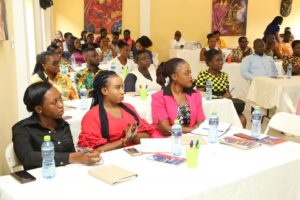

The Training Programme also serves as a refresher course for staff of GTA to enrich their knowledge and skills in order to better market Ghana.
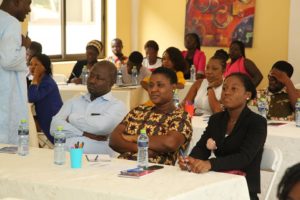
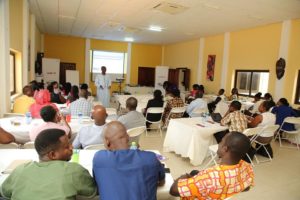
Industry Experts like Kwabena Agyekum from CIM-Ghana, Isaac Adupong of Lead it Africa, Kwakye Donkor of Africa Tourism Partners and Akwasi Agyeman, CEO of GTA took taking staff through topics like; Marketing in Action
Tourism Marketing and Promotion, as well Event Planning and Management.

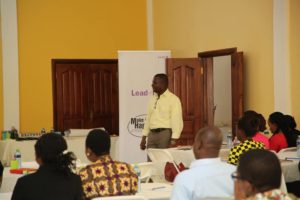
This training is in line with the new Board of Directors vision of equipping staff with needed skills to promote Ghana as a preferred tourism destination.
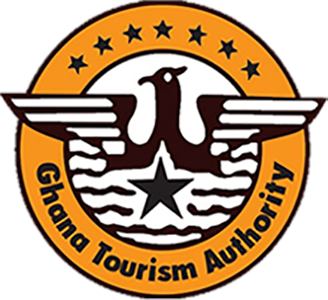

 Call Center
Call Center
